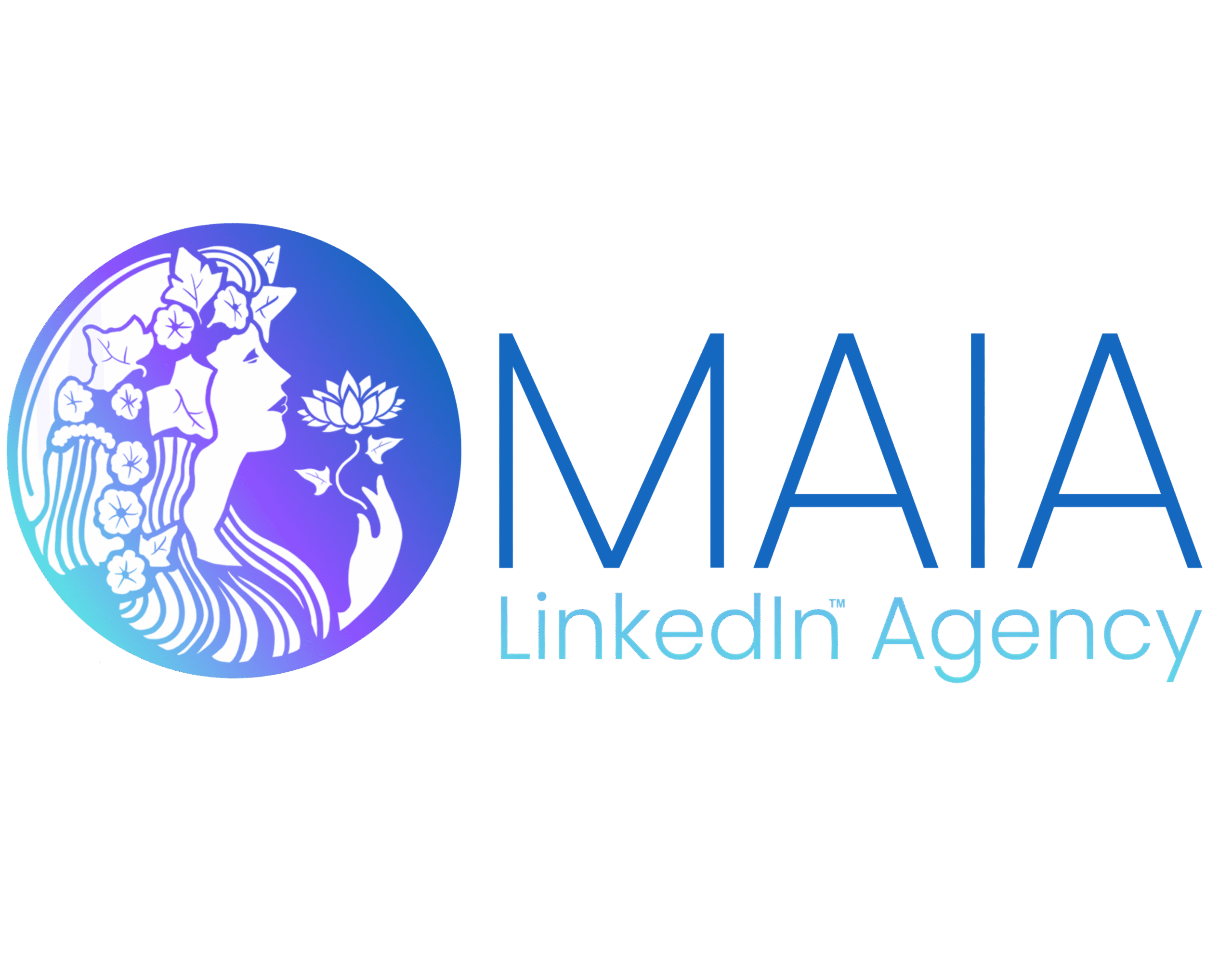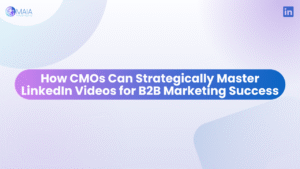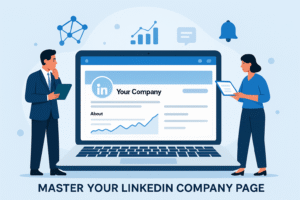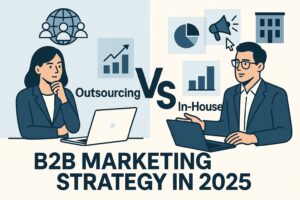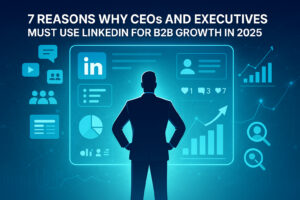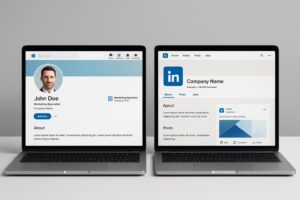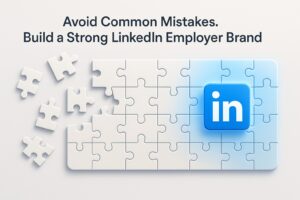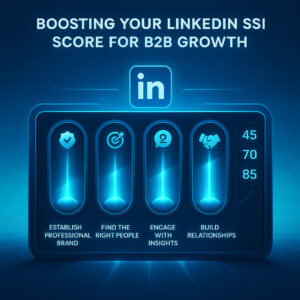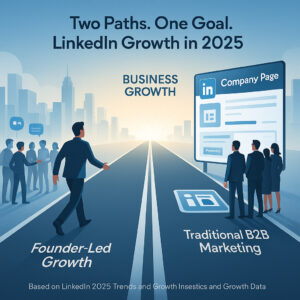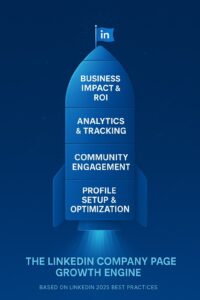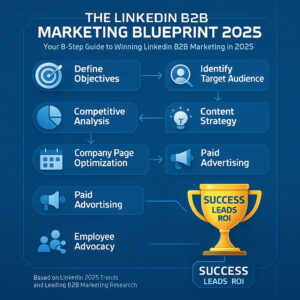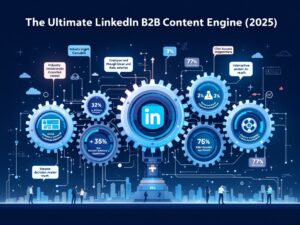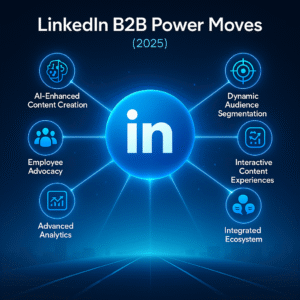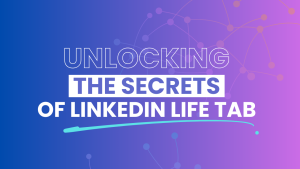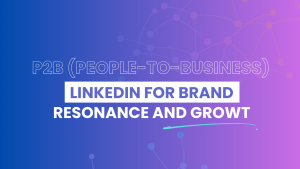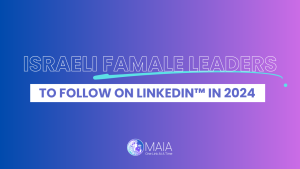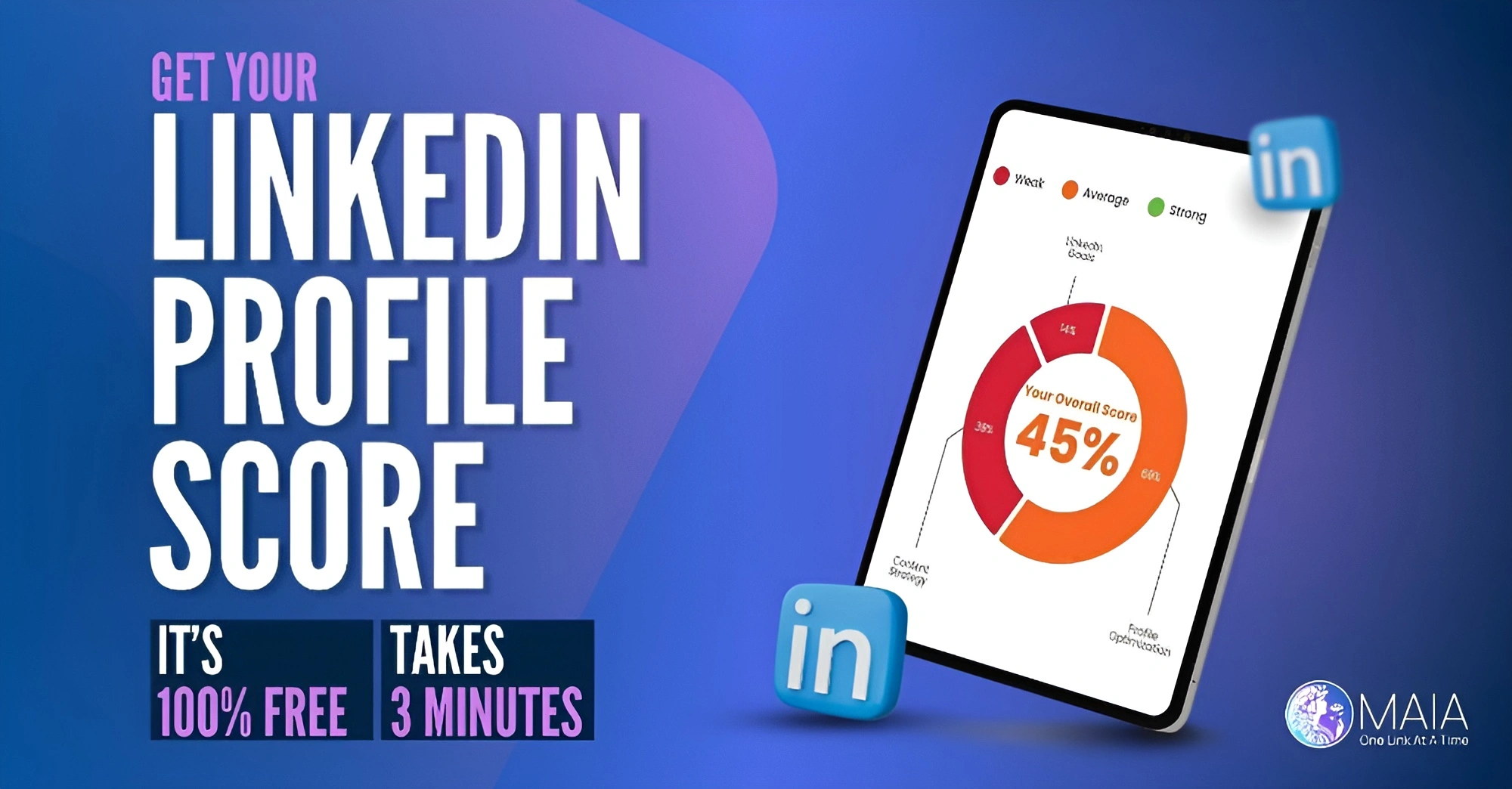LinkedIn for Sales Teams vs Traditional Prospecting: Ultimate B2B Guide
The B2B sales landscape has undergone a significant transformation over the past decade. While traditional prospecting methods once dominated the industry, professional social networks—particularly LinkedIn—have emerged as powerful alternatives for identifying, connecting with, and converting potential clients.
According to recent data from LinkedIn’s State of Sales Report, 77% of sales professionals say their organization plans to invest more in sales intelligence tools, with LinkedIn Sales Navigator being one of the most prominent options.
But how exactly does LinkedIn compare to traditional prospecting methods like cold calling, email outreach, and in-person networking? This comprehensive guide examines both approaches, providing you with actionable insights to optimize your B2B sales strategy.
The Evolution of B2B Prospecting: Traditional Methods vs. LinkedIn
Before diving into specifics, let’s clarify what we mean by “traditional prospecting” and how LinkedIn has changed the game.
Traditional Prospecting Methods
Traditional B2B prospecting typically includes:
-
Cold calling: Directly contacting potential clients by phone without prior interaction
-
Email outreach: Sending unsolicited emails to potential prospects
-
Trade shows and conferences: In-person networking at industry events
-
Direct mail: Physical marketing materials sent to business addresses
-
Referrals: Leveraging existing client relationships to gain introductions
LinkedIn for Sales Teams
LinkedIn offers sales teams specialized features like:
-
LinkedIn Sales Navigator: Advanced search filters, lead recommendations, and CRM integration
-
InMail: Direct messaging to prospects outside your network
-
Social selling: Building relationships through content engagement and conversation
-
Company insights: Real-time updates about target organizations
-
TeamLink: Identifying connections through team networks
Comparing Key Metrics: LinkedIn vs. Traditional Prospecting
Let’s examine how these approaches stack up across critical sales performance indicators.
Reach and Targeting Precision
Traditional prospecting often relies on purchased contact lists or general demographic information, resulting in variable accuracy. A Gartner study found that traditional contact data degrades by approximately 30% annually due to job changes and business closures.
In contrast, LinkedIn provides access to over 950 million professionals worldwide, with self-updated profiles. Sales Navigator’s advanced filters allow teams to target prospects by industry, company size, job title, seniority, and even recent company changes—dramatically improving targeting precision.
Response Rates
Traditional cold calling has seen declining effectiveness, with current connection rates hovering between 5-10% according to RingCentral research. Cold emails fare slightly better with open rates averaging 15-25% in B2B contexts, while response rates typically range from 1-5%.
LinkedIn InMail, by comparison, achieves response rates of 10-25% according to LinkedIn’s own data. This improvement stems from the platform’s professional context and the ability to reference shared connections or engage with prospects’ content before reaching out.
Cost-Effectiveness
Traditional prospecting carries significant costs:
-
Database subscriptions: $5,000-$25,000 annually
-
Trade show participation: $10,000-$50,000 per event
-
Sales team phone time: Approximately $35-$60 per hour
-
Direct mail campaigns: $1-$10 per prospect
LinkedIn Sales Navigator pricing starts at approximately $99 per month per user (Sales Navigator Core), with team plans offering additional features. While this represents a direct cost, the efficiency gains often offset the investment. According to a Forrester Total Economic Impact study, organizations using Sales Navigator experienced a 42% increase in productivity and a 12% increase in win rates.
Qualitative Differences in the Sales Process
Relationship Development
Traditional prospecting often follows a linear path: identification, outreach, qualification, and conversion. The relationship typically begins only after initial contact is made.
LinkedIn enables a relationship-first approach where sales professionals can:
-
Follow prospects’ activity before direct outreach
-
Engage meaningfully with their content
-
Identify mutual connections for warm introductions
-
Share relevant industry insights to establish expertise
This approach aligns with contemporary B2B buying preferences. Gartner research indicates that B2B buyers spend only 17% of their purchasing journey meeting with potential suppliers, making preliminary digital impressions crucial.
Information Gathering and Buyer Insights
Traditional methods often rely on explicit information gathering during calls or meetings, with limited visibility into the prospect’s environment or challenges beforehand.
LinkedIn provides sales teams with continuous intelligence through:
-
Job change alerts for key decision-makers
-
Company growth indicators
-
Content engagement patterns revealing business priorities
-
Announcement posts indicating new initiatives or challenges
This intel enables more informed conversations and helps sales teams identify trigger events that signal buying opportunities.
Integrating LinkedIn and Traditional Prospecting: The Hybrid Approach
Rather than viewing LinkedIn and traditional prospecting as mutually exclusive, leading B2B sales organizations are adopting integrated approaches that leverage the strengths of each method.
The Multi-Channel Prospecting Framework
A strategic multi-channel approach might look like:
-
Identification and research via LinkedIn: Use Sales Navigator to identify ideal prospects and research their background and activity
-
Initial engagement through LinkedIn: Connect and engage with prospects’ content
-
Personalized email outreach: Reference LinkedIn interactions in a targeted email
-
Strategic phone follow-up: Call with context from previous digital interactions
-
Continued relationship nurturing: Maintain connection through both LinkedIn and traditional channels
According to McKinsey research, B2B companies that implement omnichannel strategies achieve 10-15% revenue growth and 20% higher customer satisfaction rates compared to single-channel approaches.
Technology Integration: CRM + LinkedIn
Maximizing effectiveness requires integrating LinkedIn with your existing sales tech stack. Modern CRM systems like Salesforce, HubSpot, and Microsoft Dynamics offer LinkedIn integrations that provide:
-
Automatic contact and company data synchronization
-
Activity tracking across platforms
-
Unified communication history
-
Streamlined workflow between digital and traditional outreach
These integrations create a cohesive view of prospect interactions, regardless of channel.
Developing Team Capabilities for LinkedIn Sales Excellence
Successfully transitioning from traditional-only to LinkedIn-integrated prospecting requires intentional capability development.
Essential Skills for LinkedIn Sales Success
Modern B2B sales teams need training in:
-
Personal branding: Creating professional profiles that build credibility
-
Social listening: Monitoring relevant conversations and buying signals
-
Content engagement: Thoughtfully interacting with prospect content
-
LinkedIn messaging techniques: Crafting compelling, non-intrusive outreach
-
Network leveraging: Utilizing second-degree connections for introductions
Organizations that invest in LinkedIn-specific sales training see 38% higher win rates according to LinkedIn’s own research.
Need specialized expertise in LinkedIn sales strategies? Work with our LinkedIn certified experts to develop customized training for your sales team.
Measuring Success: KPIs for LinkedIn vs. Traditional Prospecting
Effectively comparing approaches requires establishing appropriate metrics. Consider tracking:
Activity Metrics
-
Connection request acceptance rate
-
InMail response rate vs. cold email response rate
-
Engagement rate on shared content
-
Profile view-to-connection conversion
Pipeline Metrics
-
Lead-to-opportunity conversion by channel
-
Average deal size by prospecting method
-
Sales cycle length comparison
-
Cost per qualified lead
ROI Calculation
To accurately assess ROI, calculate:
For LinkedIn: (Revenue generated from LinkedIn-sourced opportunities – LinkedIn investment costs) / LinkedIn investment costs
For traditional methods: (Revenue generated from traditional prospecting – Traditional prospecting costs) / Traditional prospecting costs
This comparison often reveals that while LinkedIn requires upfront investment in tools and training, the higher conversion rates and larger deal sizes typically deliver superior returns.
Frequently Asked Questions
How much does LinkedIn Sales Navigator cost compared to traditional prospecting tools?
LinkedIn Sales Navigator starts at approximately $99/month per user for the Core plan, with Professional and Team plans offering enhanced features at higher price points. Traditional prospecting tools vary widely in cost, from CRM systems ($25-$300/month per user) to specialized database subscriptions ($10,000-$50,000 annually). While Sales Navigator represents a direct cost, it often reduces expenses in other areas like purchased contact lists and conference attendance.
What response rates can B2B sales teams expect from LinkedIn compared to cold calling?
According to current data, LinkedIn InMail achieves response rates of 10-25%, significantly outperforming cold calling connection rates of 5-10%. However, results vary by industry, seniority of target prospects, and quality of personalization in outreach messages.
Can LinkedIn completely replace traditional B2B sales prospecting methods?
While LinkedIn has become increasingly central to B2B sales strategies, most successful organizations use it as part of a multi-channel approach rather than a complete replacement. Certain industries and buyer segments still respond well to traditional methods, particularly for complex, high-value solutions where direct conversation remains valuable. The most effective approach typically integrates LinkedIn with strategic traditional outreach.
How long does it take to see results from LinkedIn-based prospecting?
Most organizations begin seeing measurable improvements within 2-3 months of implementing structured LinkedIn prospecting strategies. However, building a robust presence and network that consistently generates opportunities typically takes 4-6 months of sustained effort. Organizations that invest in proper training, content strategies, and integration with existing sales processes see faster results than those taking an ad-hoc approach.
What industries benefit most from LinkedIn prospecting versus traditional methods?
Industries with highly digitally-engaged decision-makers typically see the strongest results from LinkedIn prospecting, including technology, professional services, finance, healthcare IT, and marketing services. Industries with longer sales cycles and solution-based selling also benefit from LinkedIn’s relationship-building capabilities. Traditional methods may retain more effectiveness in manufacturing, construction, and certain local service businesses, though LinkedIn is increasingly important across all B2B sectors.
